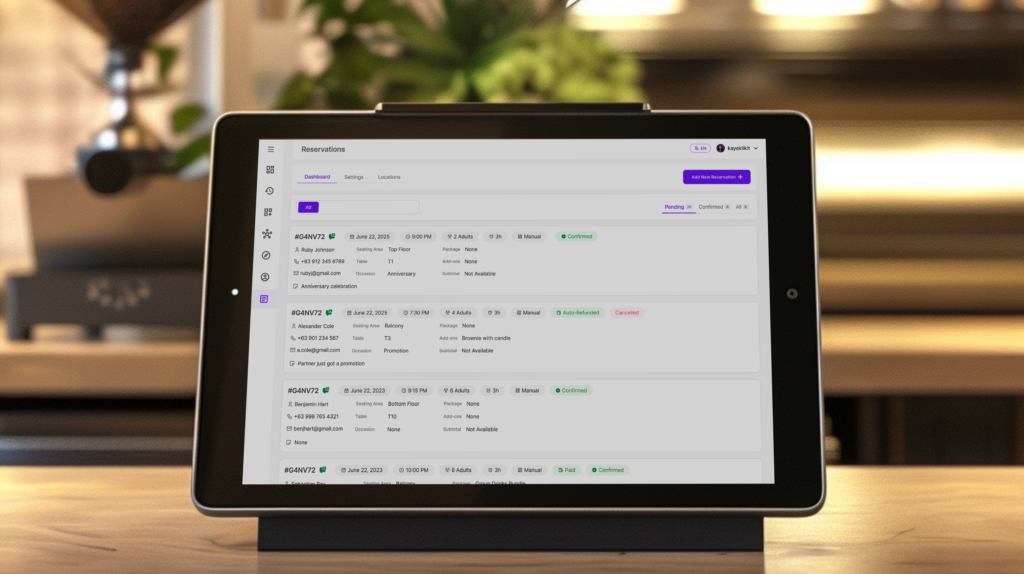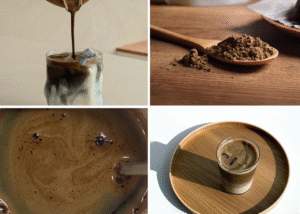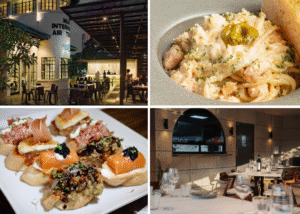Handling reservations smoothly can make or break a restaurant’s guest experience. Whether you’re managing walk-ins, taking bookings over the phone, or responding to hundreds of DMs across social media, having a clear and consistent restaurant reservation script saves time, avoids errors, and keeps your customers happy.
In this post, we’ll break down why scripts are important, where you should use them (like social media or Google Business), and even provide you with easy-to-copy examples. Plus, we’ll show you how to automate it all—so you spend less time texting and more time running your restaurant.
Why a Good Reservation Script Matters
A great reservation script is more than just polite words. It communicates professionalism, creates consistency across your team, and ensures guests always feel acknowledged. Here’s why it matters:
- Saves time: Your staff won’t need to draft a message for every reservation inquiry.
- Reduces errors: Key details like guest name, party size, and date are always captured.
- Keeps tone on-brand: Whether you’re a fine dining spot or a casual cafe, your brand voice shines through.
- Avoids double-bookings: When paired with automation or forms, it reduces human error.
Where You Can Use a Reservation Script

Let’s walk through the key places you can use these scripts to streamline your reservations process:
1. Phone Calls and Text Messages
Still getting calls and text messages for bookings? Train your staff with a script to ensure they gather all the essentials. Many guests will find your contact info through your Google Business Profile, which appears when they search for your restaurant on Google. This makes it even more important to have a solid script ready for when they call or message.
If your restaurant isn’t set up on Google Business Profile yet, it’s worth doing—it helps you show up on Maps, Search, and more. Here’s a step-by-step guide.
2. Facebook and Instagram DMs
With 47% of restaurant guests finding it easier to make reservations online, your guests will likely message your social media pages to book a table. Making use of Meta Business Suite to manage your auto-replies and FAQ’s is an efficient way to streamline your reservation process.
Learn how to set up auto-replies here: Set up Inbox automations on Meta Business Suite desktop.
Restaurant Reservation Script Examples You Can Use
Phone Reservation
“Hi! Thank you for calling [Restaurant Name]. We’d be happy to reserve a table for you. May I get your name, date and time of visit, party size, and contact number? We’ll send a confirmation shortly.”
Instagram and Messenger Auto-Replies
Hi there! 👋 Thanks for reaching out to [Restaurant Name]. To book a table, just click this link: [insert reservation link] and we’ll get back to you shortly with a confirmation!”
Walk-in Unavailable / Fully Booked
“Hi! Thanks for your interest in dining with us. Unfortunately, we’re fully booked at the moment. You may check here for other available dates/times: [insert reservation link] . Thank you!”
Reservation Reminder
“This is a friendly reminder of your reservation at [Restaurant Name] for [Time] on [Date]. Just a reminder that no-shows are subject to a fee. Thank you and we look forward to welcoming you!”
Simplify the Entire Booking Process with klikit

The perfect script is just the start—a great booking system completes the experience.
Alongside taking calls and managing every DM, klikit gives your guests a smooth way to book tables through a form—and all you need to do is approve or decline bookings from your dashboard.
- No manual entry! Save time, reduce errors, and create a consistent workflow for your staff.
- Receive instant notifications the moment a guest books—so no reservation goes unnoticed.
- Say goodbye to pen-and-paper or scattered spreadsheets—manage all your bookings in one, easy-to-use dashboard.
- Gather customer information to create personalized marketing campaigns and strengthen loyalty
It’s perfect for restaurants that want to stay professional while minimizing staff workload.
Common Mistakes to Avoid with Reservation Scripts
Even the best intentions can fall flat if your reservation scripts aren’t done right. Here are some common mistakes to avoid:
- Using vague or incomplete messages: Not asking for party size, time, or guest name can lead to confusion or overbooking.
- Inconsistent tone: Make sure all staff or auto-replies follow your brand voice—whether casual or formal.
- Forgetting to follow up: Always confirm a guest’s reservation and send reminders to avoid no-shows.
- Not including a booking link: If you rely on guests to figure out how to reserve, you risk losing them. Make it easy.
How to Keep Your Reservation Scripts On-Brand
Your script should reflect the personality of your restaurant. Whether you’re a trendy brunch spot or a fine dining establishment, the tone matters.
Casual script example: “Hey there! 🍽️ We’d love to save you a seat. Just hit this link to reserve: [insert link]”
Formal script example: “Thank you for considering [Restaurant Name]. Kindly use this form to reserve a table: [insert link]. We look forward to serving you.”
Adapt your script to match your atmosphere, from playful emojis to polished professionalism.
Why Fast Response Times Matter (and How to Improve Them)
Speed matters. In fact, studies show that 75% of customers expect a response within 5 minutes. Delayed replies can cost you bookings—or worse, loyal guests.
To keep up:
- Use auto-replies and FAQs to send instant replies
- Set clear Standard Operating Procedures (SOPs) for staff to reply to messages within a set timeframe
- Route all reservations through a centralized dashboard like klikit, to minimize back-and-forth
Fast responses build trust and give you an edge in a competitive dining market.
Dealing with No-Shows or Last-Minute Cancellations
No-shows hurt revenue and affect staffing. Use your reservation scripts to reduce them with proactive reminders and clear policies.
Tips:
- Send a confirmation 24–48 hours before the reservation
- Include your no-show or late cancellation fee politely in the reminder
- Ask for confirmation via reply or form click
Scripts like: “Please confirm your booking by replying YES. No-shows are subject to a [PHP XXX] fee.” are simple but effective.
Use Scripts Beyond Reservations (Upsell or Gather Feedback)
Reservation scripts don’t have to stop at “We’ve saved your table.” You can use them to upsell or keep guests coming back.
Examples:
- “Celebrating something special? Let us know so we can make it memorable!”
- “Try our new prix-fixe menu—mention this message for 10% off.”
- “We’d love your feedback! Click here to leave a quick review.”
These small additions create a more personal, engaging experience—and show that you care beyond just taking a booking.
Final Tips for a Smooth Reservation Experience
- Train staff to use consistent scripts
- Respond quickly or automate common replies
- Use polite but clear language for rejections or limits
- Direct all bookings to a central reservation link
Conclusion
A polished restaurant reservation script can save you hours of work, reduce errors, and give your guests a smoother booking experience. Use the examples above to confidently handle phone calls, social media messages, and booking requests across all channels.
And when you’re ready to take it further, streamline your entire reservations process with klikit—so every restaurant reservation script leads to a confirmed, organized, and stress-free booking.




